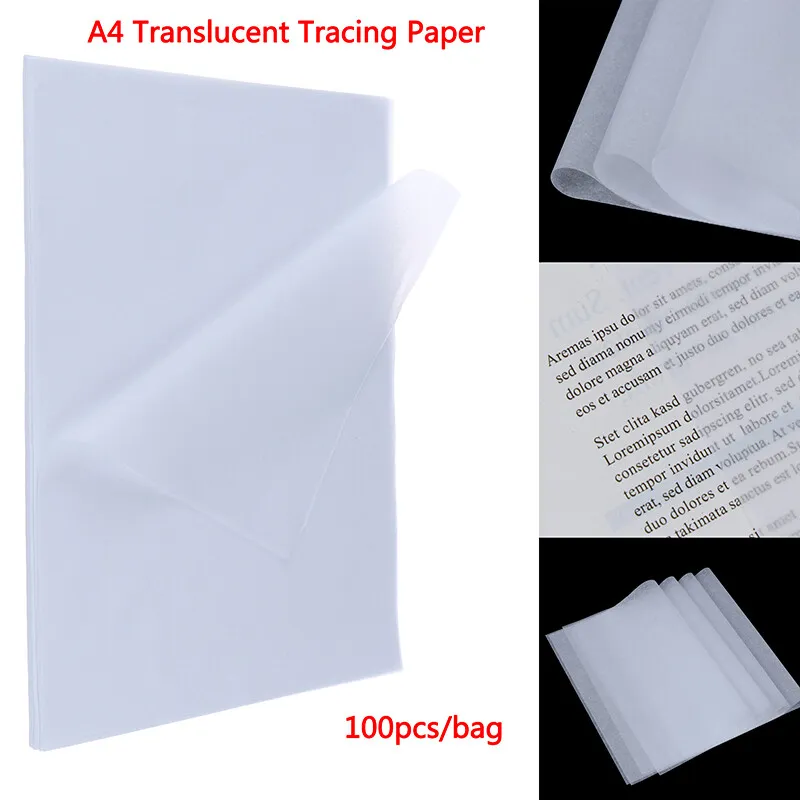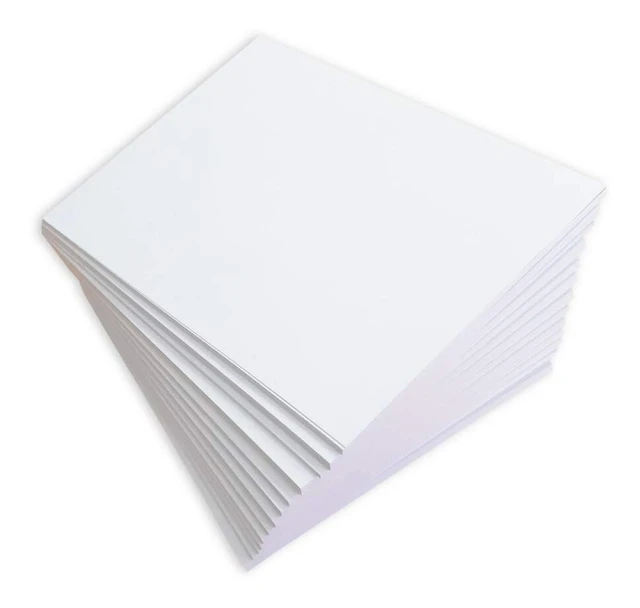 Introduction:
Introduction:
Understanding printer paper weight is essential for obtaining the desired print results and choosing the right paper for your needs. Paper weight refers to the thickness and durability of paper, which can affect the appearance and performance of printed materials. In this comprehensive guide, we will explore the importance of printer paper weight, different weight classifications, their applications, and tips for selecting the appropriate paper. By understanding these factors, you can make informed decisions, achieve optimal print quality, and meet specific printing requirements.
 Here are some common standard paper sizes:
Here are some common standard paper sizes:
Print paper sizes can vary depending on different regions and purposes, but here are some common standard paper sizes:
Letter Size:
The mostprinter paper in North America is the Letter size, measuring 8.5 inches by 11 inches (216 mm by 279 mm).
A4 Size:
A4 is an internationally recognized standard paper size used in most countries except for North America. It measures 210 mm by 297 mm, or approximately 8.27 inches by 11.69 inches.
Legal Size:
Legal size paper is a common size used for legal and official documents. It measures 8.5 inches by 14 inches (216 mm by 356 mm).
A3 Size:
A3 is twice the size of A4 and commonly used for posters, presentations, or architectural drawings. It measures 297 mm by 420 mm, or approximately 11.69 inches by 16.54 inches.
A5 Size:
A5 is half the size of A4 and is often used for booklets, notepads, or smaller documents. It measures 148 mm by 210 mm, or approximately 5.83 inches by 8.27 inches.
Tabloid Size:
Tabloid, also known as Ledger, is commonly used for newspapers and large-format printing. It measures 11 inches by 17 inches (279 mm by 432 mm).
These are just a few examples of standard paper sizes, and there are many other sizes available based on specific requirements and applications. It’s essential to consider the intended use and regional standards when selecting the appropriate paper size for printing.
In general, standard paper sizes and regular printing paper sizes can refer to the same sizes, especially when it comes to common sizes like Letter (8.5″ x 11″) and A4 (210mm x 297mm). These sizes are widely used and considered standard for printing documents, letters, and other general purposes.
However, it’s important to note that there can be variations in paper sizes depending on regions and specific requirements. Some countries may have slightly different standard sizes, and there can be specialty paper sizes for specific purposes or industries.
Standard paper sizes are typically recognized and used internationally, while “regular” printing paper sizes may vary based on the preferences and practices of different manufacturers or businesses.
Ultimately, it’s best to refer to the specific paper size mentioned or recommended by your printer or the guidelines you are following to ensure compatibility and accurate printing.
Importance of Printer Paper Weight
Definition of Paper Weight:
Paper weight refers to the measurement of a paper’s thickness and density, typically expressed in pounds or grams per square meter (gsm).
It determines the perceived thickness and feel of the paper.
Impact on Print Quality:
Paper weight affects how ink is absorbed and distributed on the paper’s surface.
Using the appropriate paper weight helps achieve sharper image quality, prevents ink bleed-through, and ensures vibrancy of colors.
 Common Paper Weight Classifications
Common Paper Weight Classifications
Bond Paper:
Bond paper is lightweight and commonly used for everyday printing tasks, such as copies, drafts, and documents.
Its weight ranges from 20 lb (75 gsm) to 24 lb (90 gsm).
Text Paper:
Text paper is slightly heavier than bond paper and is often used for brochures, flyers, and other promotional materials.
It typically ranges from 60 lb (90 gsm) to 80 lb (120 gsm).
Cover Paper:
Cover paper is thicker and more durable than bond or text paper.
It is suitable for business cards, postcards, and book covers, with weights ranging from 80 lb (120 gsm) to 120 lb (200 gsm).
Applications of Different Paper Weights
Everyday Documents:
Bond paper, with a weight of 20 lb (75 gsm) or 24 lb (90 gsm), is commonly used for printing text-heavy documents, memos, and school assignments.
Professional Presentations:
For professional documents, text paper between 60 lb (90 gsm) to 80 lb (120 gsm) provides a balance between durability and a refined appearance.
It is suitable for business reports, presentations, and brochures.
Promotional Materials and Packaging:
Heavier paper weights, such as cover paper ranging from 80 lb (120 gsm) to 120 lb (200 gsm), are ideal for creating high-quality marketing collateral, packaging, and cards.
 Selecting the Right Paper Weight
Selecting the Right Paper Weight
Consider the Purpose and Intended Use:
Determine the type of documents you will be printing and their desired level of durability and presentation quality.
A heavier paper weight is suitable for materials that require a professional or high-end appearance.
Printer Compatibility:
Check your printer’s specifications to ensure it can handle the weight of the paper you intend to use.
Some printers may have limitations on the weight or thickness of the paper they can accommodate.
Optimum Print Quality:
Experiment with different paper weights to achieve the desired print results.
Consider factors like ink absorption, color vibrancy, and image sharpness when selecting paper weight.
Here are some key points highlighting the importance of printing paper in the workplace:
Printing paper plays a crucial role in office environments for various reasons. Here are some key points highlighting the importance of printing paper in the workplace:
Documentation and Communication:
Paper provides a tangible medium for creating, storing, and sharing important information. It allows for the creation of physical documents that can be easily accessed, distributed, and archived. Paper-based documents are often necessary for legal, financial, or contractual purposes.
Efficient Workflows:
Printing paper facilitates efficient workflows by allowing employees to review and edit physical documents. It enables tasks such as reading, annotating, signing, and making notes directly on paper, which can enhance productivity and collaboration.
Portability and Accessibility:
Printed documents offer portability, making it convenient to take notes, review reports, or present information in meetings, conferences, or travel situations where electronic devices may not be available or practical.
Visual and Physical Medium:
Paper provides a tangible and visually identifiable medium for information. Printed materials, such as brochures, flyers, or presentations, can convey information and messages effectively through visual cues, illustrations, and tactile experiences.
Compliance and Security:
Certain industries, such as legal, healthcare, or government sectors, often require physical copies of documents due to regulatory or security considerations. Paper-based documents can provide a more controlled and secure environment for sensitive or confidential information.
Redundancy and Backup:
Paper copies can serve as an essential backup for digital files in case of technological failures, data corruption, or system crashes. They offer an additional layer of redundancy and ensure critical information is not solely reliant on electronic systems.
Convenience for All:
Not everyone has regular or easy access to digital devices or may have personal preferences for paper-based interactions. Providing printed documents ensures inclusivity and accommodates different workstyles and needs.
While digital advancements have reduced paper usage in some areas, printing paper remains a vital tool for many office tasks and functions. Striking a balance between the benefits of paper and the advantages of digital technologies can help optimize workflows and ensure effective communication and record-keeping in the office environment.
 Conclusion:
Conclusion:
Understanding printer paper weight is crucial for achieving optimal print quality and meeting specific printing requirements. By grasping the importance of paper weight, the range of weight classifications, and their applications, you can confidently select the most suitable paper for your printing needs. From everyday documents to professional presentations and promotional materials, choosing the appropriate paper weight ensures a refined appearance and durability. Embrace the information presented in this comprehensive guide, and make informed decisions to enhance your printing experience. With the right paper weight, you can produce outstanding printed materials that meet your expectations and effectively convey your message.
Leave a Reply